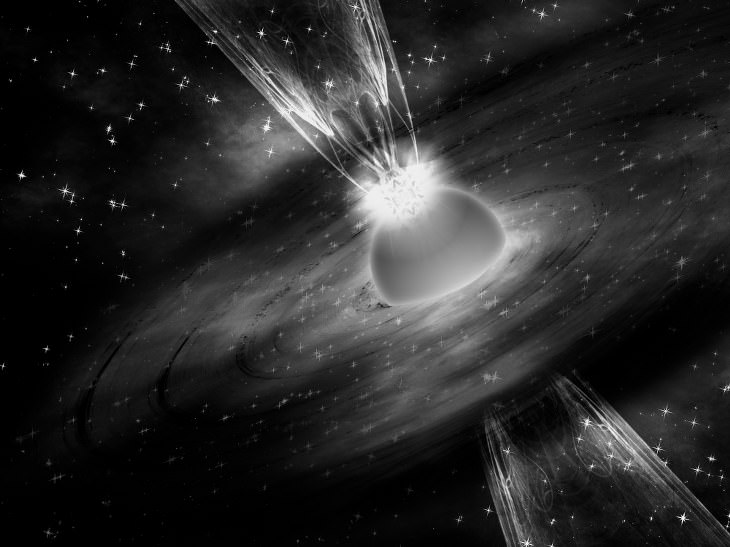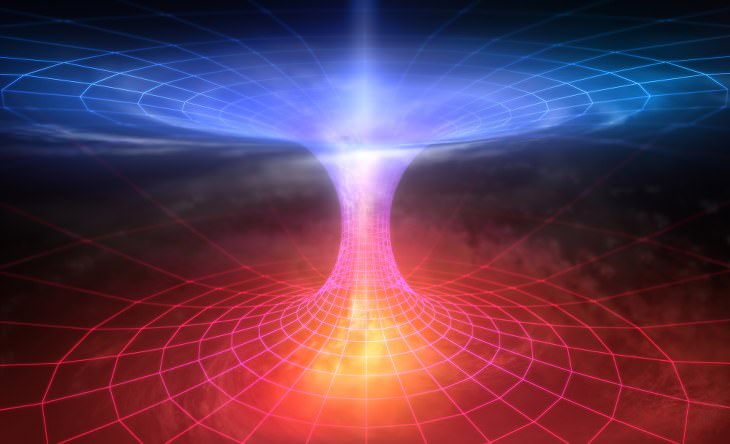1. What is dark matter?
Around 84% of the matter in our universe is known as dark matter, meaning that it doesn't emit or absorb light. Strangely, it cannot be seen directly, and we haven't even discovered any of it by indirect means either. However, we know that it does exist due to the way in which it has a gravitational effect on visible matter. There are several detection systems in place around the world which are constantly on the lookout for dark matter, but none of them have found anything yet. A recent study suggests that dark matter may actually form long streams throughout the universe which radiate out of the Earth like hairs.
2. Are there parallel universes?
Astrophysical findings indicate that space-time may actually be 'flat,' as opposed to 'curved,' which could indicate that the observable universe is actually just one part of an infinitely large 'quilted multiverse.' However, the laws of quantum physics also state that there are only a finite number of possible particle configurations for every cosmic patch (adding up to 10^10^122 distinct possibilities). If there are an infinite number of cosmic patches, then that would mean that the particle arrangements within some of them would end up being repeated. If this turns out to be true, then that would mean that there are an infinite number of parallel universes out there where you exist exactly as you do right now!
3. What is the fate of the universe?
The fate of our universe depends entirely on a factor of unknown value, known as Ω, which is the total density of energy and matter throughout the universe. If Ω is greater than 1, then the universe would either expand forever or end up collapsing on itself, depending on the amount of dark energy present.
If Ω is less than 1, then everything in the universe, including individual atoms, would eventually be wrenched apart. If Ω is exactly 1, then depending on the amount of dark energy present, the universe will either stop expanding or will be wrenched apart entirely.
4. Why are there unequal amounts of matter and antimatter?
Many people think that when the Big Bang took place, equal amounts of matter and antimatter should've been created. However, if that had happened then they would have immediately canceled each other out, leaving nothing left to exist. It is this imbalance of matter and antimatter that allows our universe to be the way it is. Why the Big Bang chose to favor matter over antimatter is still anyone's guess though.
5. Why do some sound waves emit light?
Sonoluminescence is a phenomenon that occurs when certain sound waves collide with a body of water and emit bubbles containing flashes of light. Scientists have long tried to discover exactly what causes this to occur, but none have come up with a definitive solution. The most popular theories include compression heating of the gases inside the bubbles, electrical discharges, and even tiny nuclear fusion reactions within the sound wave itself.
6. Do we live in a false vacuum?
While there's no conclusive evidence, some scientists claim that our universe may actually exist within a false vacuum. This means that if a high-energy incident were to take place within our universe, then it may end up being replaced by a new universe with completely different physical laws. Some scientists even claim that this is what caused the Big Bang. If this were to be true, then who knows how many other universes existed before our own?
7. What causes time to move forward?
Time moves forward due to the increase of entropy (the level of disorder within the universe). Once entropy has occurred, the process is entirely irreversible, which is why it can only keep on increasing. Even though this has been observed to be true, scientists still haven't been able to explain what made the universe so orderly in the first place, when all of existence was crammed together in a tiny space.
8. What is gravity made up of?
Most forces are made up of observable particles, such as photons, bosons, and gluons. Gravity, however, seems to be the exception to the rule, since nobody has ever physically seen any part of it. Most physical theories attribute gravitational force to a hypothetical massless particle known as a graviton, which they hope to observe as soon as possible. However, some physicists, such as Theodor Kaluza and Oskar Klein, claim that gravity may, in fact, be operating beyond the domains of space and time, which would explain its elusiveness.








